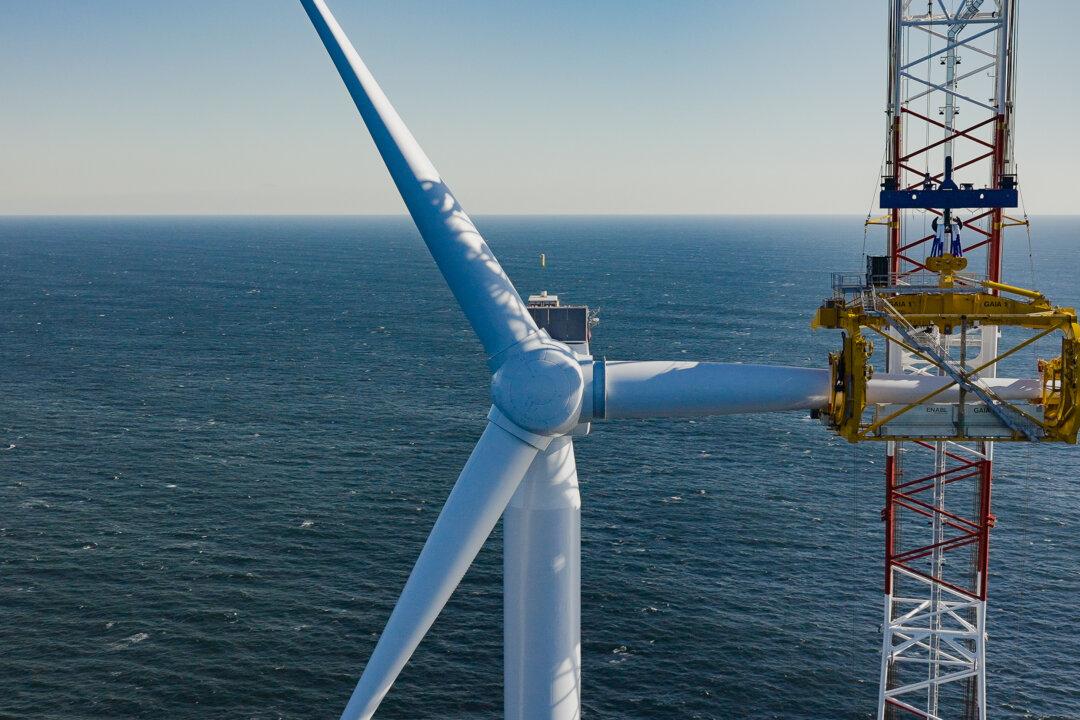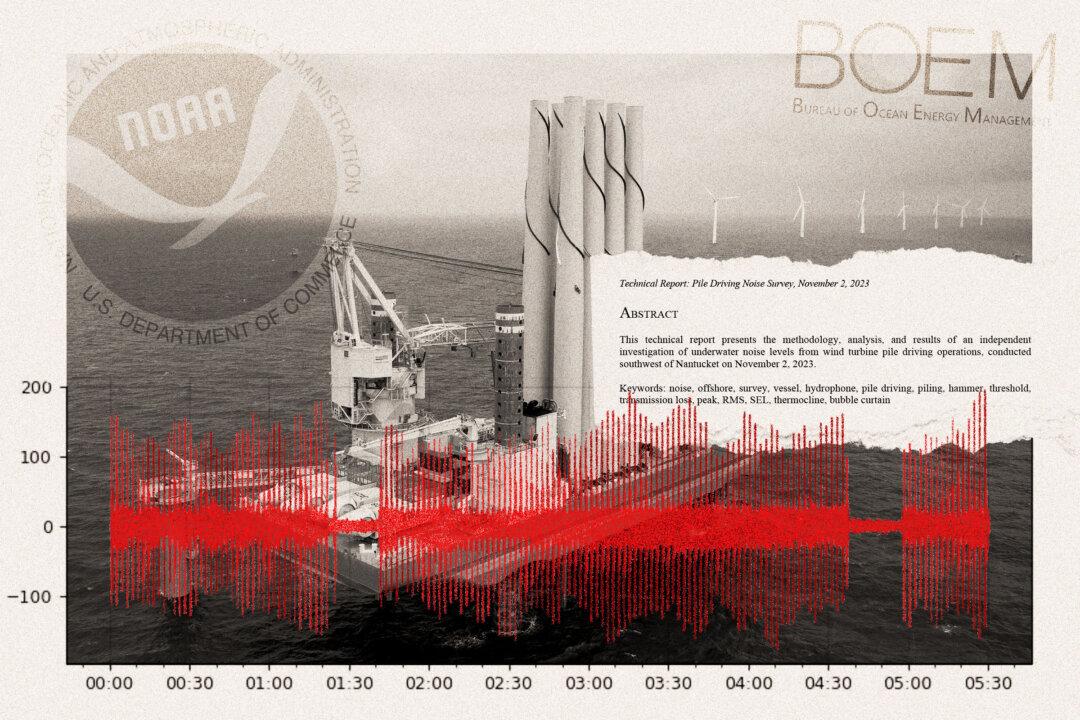The industrialization of the Atlantic Ocean is underway. South Fork Wind, America’s first utility-scale offshore wind farm, has begun delivering power to Long Island, New York.
“First power has started flowing to the grid,” Ryan Ferguson, Orsted’s head of corporate communications for the Americas, told The Epoch Times via email.





